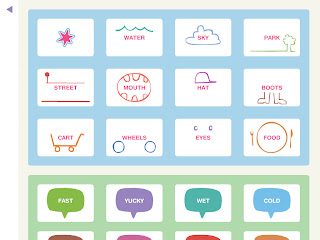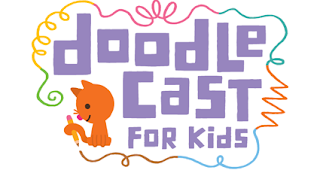Until I began working with kids what seems like a lifetime ago, I didn’t realize that not being able to draw was something so many kids struggled with. I just assumed that everyone knew how to draw and that some were just better at it than others.
It is quite common that children who have handwriting difficulties will also have a hard time with being able to draw. When I evaluate a child to determine their occupational therapy needs, I always ask that they draw a picture of themselves or their family and to draw another picture of their choice. It is really interesting to see
I am a big believer that sometimes it requires some motivation and bribery to teach kids new skills. Typically, kids avoid things that are difficult because it doesn’t make them feel happy. This shouldn’t come as a surprise to any of the adults reading this blog as I think we are all guilty of the same thing. I know I still avoid doing things that aren’t easy or that I might not be very good at. As an adult, we can do that without too much backlash. Children are sometimes forced to do things that they aren’t good at or that is hard for them and it makes them much more resistant to wanting to do it. So it is really important to me that I find fun and creative ways to work on those more challenging things so that it ends up being more fun and less work for them. As a child I wasn’t a great drawer, but I had fun and could draw a variety of things so it made me sad to see kids get stressed out when drawing.
Doodlecast for Kids, created by
zinc roe Design, is a super cute app that works on teaching kids how to draw. The really cool thing about this app though is that while you are drawing, it records your drawing process including your voice. You can then save it on You Tube and send it to parents, teachers, etc.. As a therapist, I love that I can share this process with parents so they not only see their child’s work but that they can have a better understanding of what kind of language I am using in order for their child to be successful. The chances of seeing progress quicker is more likely if we are all using the same language and a similar process with kids.

As you can see in the picture to the right, there are different ways to start the drawing process. I like the idea of giving the kids a starting place like the water and the eyes. When I use it, I brainstorm with the kids even before they begin to draw about what they will include in their picture. For example, if completing the water picture, I would ask what kind of animals could be in the water, what could be in the bottom of the water and/or what might be on top of the water. If you choose to use the word bubbles it will ask you to draw something yucky, wet, etc..
As you can see in the picture below of the octopus, you can let your imagination run wild. Sometimes once kids are given a starting place, they can jump into completing a picture with greater ease. As they become more adept at completing the pictures, you can start to use more of a blank canvas and allow them to draw pictures of their own. Many of the kids I work with struggle with the motor planning and processing part of drawing a picture and end up shutting down. Even when they feel comfortable enough to draw a picture using the blank template, I would still talk through the process with them to help organize their work and know what they are thinking so I can then help them if they get stuck at any point.
Improve Grasping Skills-as with many other handwriting apps, I like to have the kids hold a stylus when using this app. Check out this link to the Fred and Friends iCreate Crayon stylus. I find apps like this are perfect for being able to work on holding a writing instrument the correct way because they tend to become so engrossed in their work.
Improve Motor Planning and Following Directions-sometimes when I ask children to draw pictures, they just scribble all over the paper and quickly finish what they are doing. When using this app, you could help talk through the process and come up with a plan and then encourage them to follow that plan. I would make it simple and stick to 3 or 4 steps in the beginning and begin increasing the demands as they are more comfortable with the app and their drawing skills.

Improve Imagination Skills-this app can be a great way to get kids to start thinking outside of their boxes when drawing. Many kids I work with will draw the same picture every time I ask them to draw. Hopefully this will help them begin to feel more comfortable drawing new things and add more details and ideas to their drawings. It might take time, but I have a feeling that they will become more confident in their drawing skills.
Improve Social Skills-this is a perfect game to do with siblings, parents or friends. It would be fun to do this with a small group of kids and see what each one adds. This is a great way to work on improving a child’s flexibility about working with friends and doing something they may not want because each person will be able to add to the picture and they have to not get upset.
I am really looking forward to using
Doodlecast for Kids more with the kids at work. I think they will really get a kick out of the fact that after they finish their picture, they can watch what they did and see how they got to the finished product. As I mentioned before, I also love the fact that you can share the videos with the parents. It is a great way for them to see what we are working on in therapy, what their child is capable of doing and how they can do similar things when they are working with them at home.
I would love to hear your thoughts about this app and how you might use it with your kids and how you might adapt it for even greater success for your kids. As always, I am just a
click away and would love to hear from you. Happy Doodling!
 As you can see in the picture to the right, there are different ways to start the drawing process. I like the idea of giving the kids a starting place like the water and the eyes. When I use it, I brainstorm with the kids even before they begin to draw about what they will include in their picture. For example, if completing the water picture, I would ask what kind of animals could be in the water, what could be in the bottom of the water and/or what might be on top of the water. If you choose to use the word bubbles it will ask you to draw something yucky, wet, etc..
As you can see in the picture to the right, there are different ways to start the drawing process. I like the idea of giving the kids a starting place like the water and the eyes. When I use it, I brainstorm with the kids even before they begin to draw about what they will include in their picture. For example, if completing the water picture, I would ask what kind of animals could be in the water, what could be in the bottom of the water and/or what might be on top of the water. If you choose to use the word bubbles it will ask you to draw something yucky, wet, etc.. 



Comments 1
Love this post — I'm definitely going to check out the app! I'll be adding you to my list of blogs to follow as well!